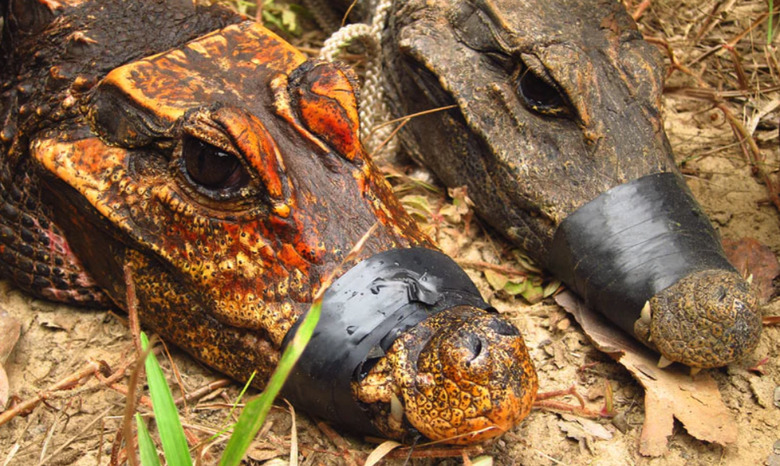Orange Crocodiles That Swim In Bat Poop Are Turning Into A New Species
A very special kind of crocodile calls the Abanda caves in Gabon, Africa, home. The creatures are African dwarf crocodiles, but they might not be for very much longer, because their isolated habitat has prompted a shift in their genetics. Scientists recently conducted some testing on the animals and now believe they will eventually become an entirely separate species, but that's not even the weirdest thing about them.
The cave-dwelling crocodiles also look dramatically different than the African dwarf crocodiles that reside above ground. Rather than a muddy brown, they're a mix of tan and orange, and they owe their unusual coloring to their habit of swimming around in bat poop all day. Yeah, this is going to get kinda gross.
The crocodiles don't swim in bat poop — well, technically it's bat guano, which is the technical name for bat excrement, but you get the idea — for fun. The crocs that call the caves home actually eat the bats that live inside, and with tens of thousands of bats in the cave there's plenty to munch on. With all those bats hanging around, their poop piles up rapidly and has turned the floor of the caves into a watery mixture that resembles liquid mud.
The makeup of the sludge is actually tanning the skin of crocodiles who swim in it, causing them to become orange and yellow. However, it's not their bizarre poop-swimming habits that are causing them to turn into a new species, it's the isolation itself.
"As a result of that isolation and the fact that few individuals come in or go out, they're in the process of [becoming] a new species," Matthew Shirley, a researcher studying the crocodiles and co-author of a soon-to-be-published paper on them, explains. "Whether that happens soon or not is anyone's guess."
Shirley and his team drew blood samples from dozens of the crocs that live in the caves and then compared them with those living above ground. What they discovered was that the cave-dwelling crocodiles are passing along a unique set of genes to their offspring that originated with a single animal. This suggests that the animals are evolving into something slightly different, but it's unclear how many generations it will take before that actually happens.
